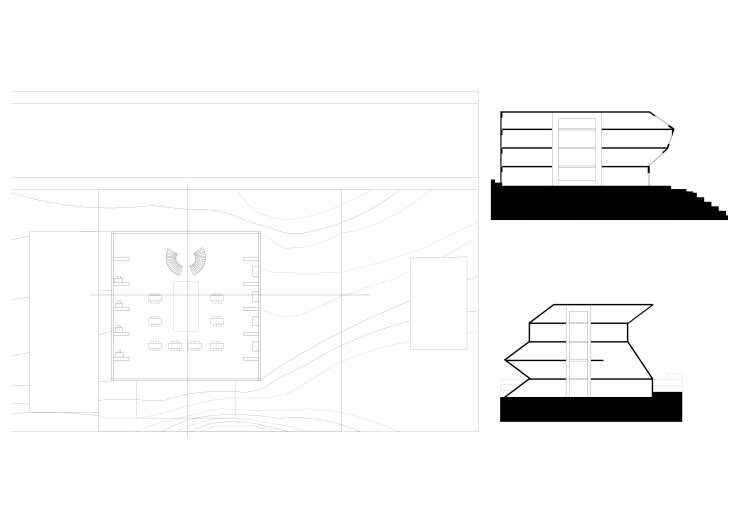Hi, I am here to tell you about my friend Beril Özmen’s jury. Her design is located in Kars. Kars has cold weather mostly especially the winter and also snowy weather. So, in her deisng she decreased open spaces.
On the jury the main part that she got critiques were about the building’s façade. The jury commented that the model’s façade could get more fragmented on areas of voids like galery spaces.
There were some areas not showing in her models so the jury commented that if the sections and the model was finished they could’ve show different things because they change the way we perceive the building, they said.
Another thing is, Openings/ closings relation could be studied more, openings on façade are important and should’ve shown. Proposal of the circulation system should also be shown. It is also important to see it in section as a reference to Seattle Central Library.
The jury also asked why a surface is completely transparent and contuniation between the neighbour with library was provided by that. That was a positive comment on that. But the jury also commented that it is as if the spaces wants to continue in an orthogonal system but the edges prevent that. Walls coming so close to the edges of the site that we are working on is not so good.
In sections stairs around the view which is a positive thing but the masses are not a square prism so the inner plan should be organised according to that. More references may have been more helpful for that, Seattle Central could bring different angles so she was advised that she could’ve also refered to that.
Here is her model:
Here is her poster:

If you’d like to read more about her jury and get to know her design you should check out her blog 🙂


























 -Here is the problamatic part of the model. On our last term I had first decide on the change of the topography then produce the topography model. But now while i was starting this model I was not yet decided on the change of the topography but in the later models i will be considering of this issue.
-Here is the problamatic part of the model. On our last term I had first decide on the change of the topography then produce the topography model. But now while i was starting this model I was not yet decided on the change of the topography but in the later models i will be considering of this issue. The ground is ‘cut’ into the high side and sand from this ‘cut’ is placed on the low side to ‘fill’. This creates a new sand pad level (SPL) on which the slab (or slabs in the case of multiple units) is placed.
The ground is ‘cut’ into the high side and sand from this ‘cut’ is placed on the low side to ‘fill’. This creates a new sand pad level (SPL) on which the slab (or slabs in the case of multiple units) is placed.